Airbrush and spray paint are two popular painting techniques that are commonly used in various industries. They both have their own unique features and advantages, making them suitable for different applications. In this article, I will discuss the key differences between airbrush and spray paint, and help you understand which technique is best for your specific needs.
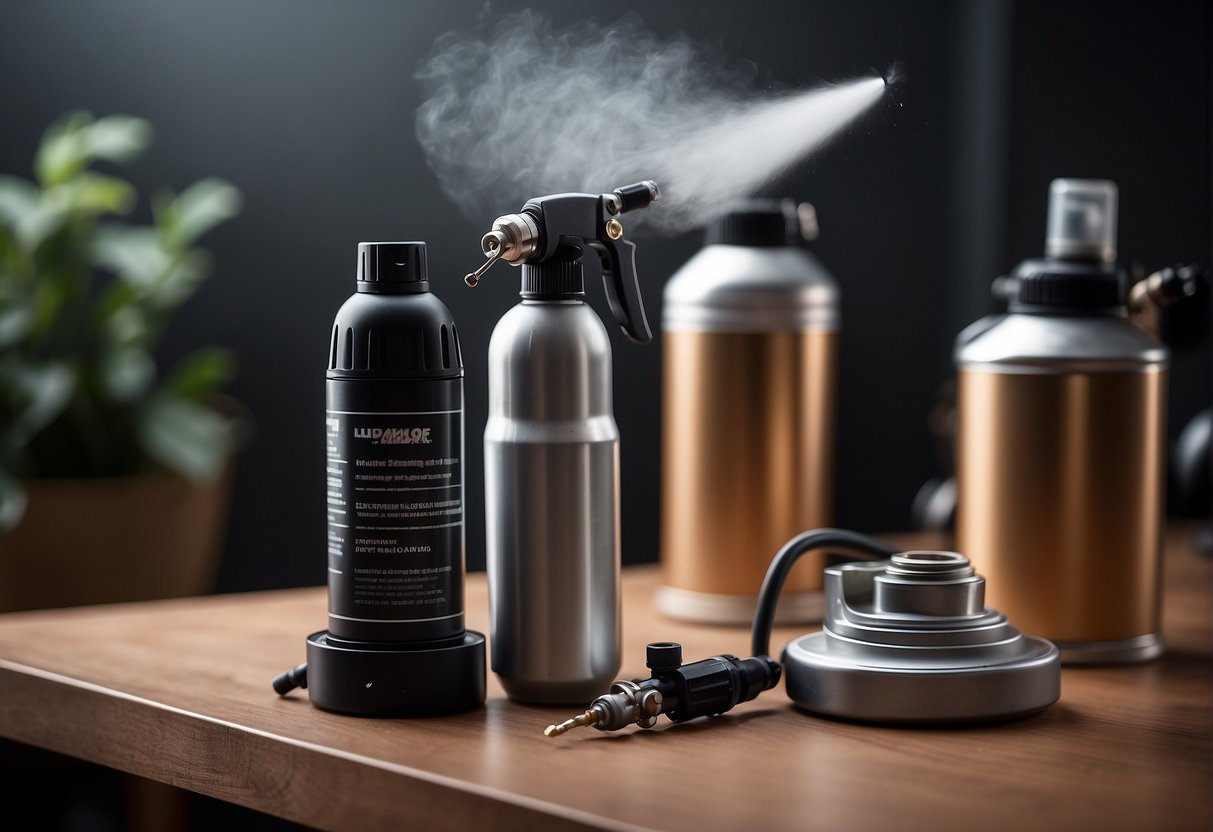
Airbrush is a technique that involves using an airbrush gun to spray a fine mist of paint onto a surface. This technique is typically used for detailed work, such as creating intricate designs or adding highlights and shadows. On the other hand, spray paint is a technique that involves using a spray can to apply paint in a wide, even coat. This technique is typically used for larger applications, such as painting a car or a wall.
When deciding between airbrush and spray paint, it’s important to consider your specific needs and the type of application you are working on. In the following sections, I will compare the application techniques, performance and results, practical considerations, and advantages and disadvantages of airbrush and spray paint to help you make an informed decision.
Key Takeaways
- Airbrush and spray paint are two popular painting techniques with their own unique features and advantages.
- Airbrush is best for detailed work, while spray paint is best for larger applications.
- When deciding between airbrush and spray paint, it’s important to consider your specific needs and the type of application you are working on.
Understanding Airbrush and Spray Paint
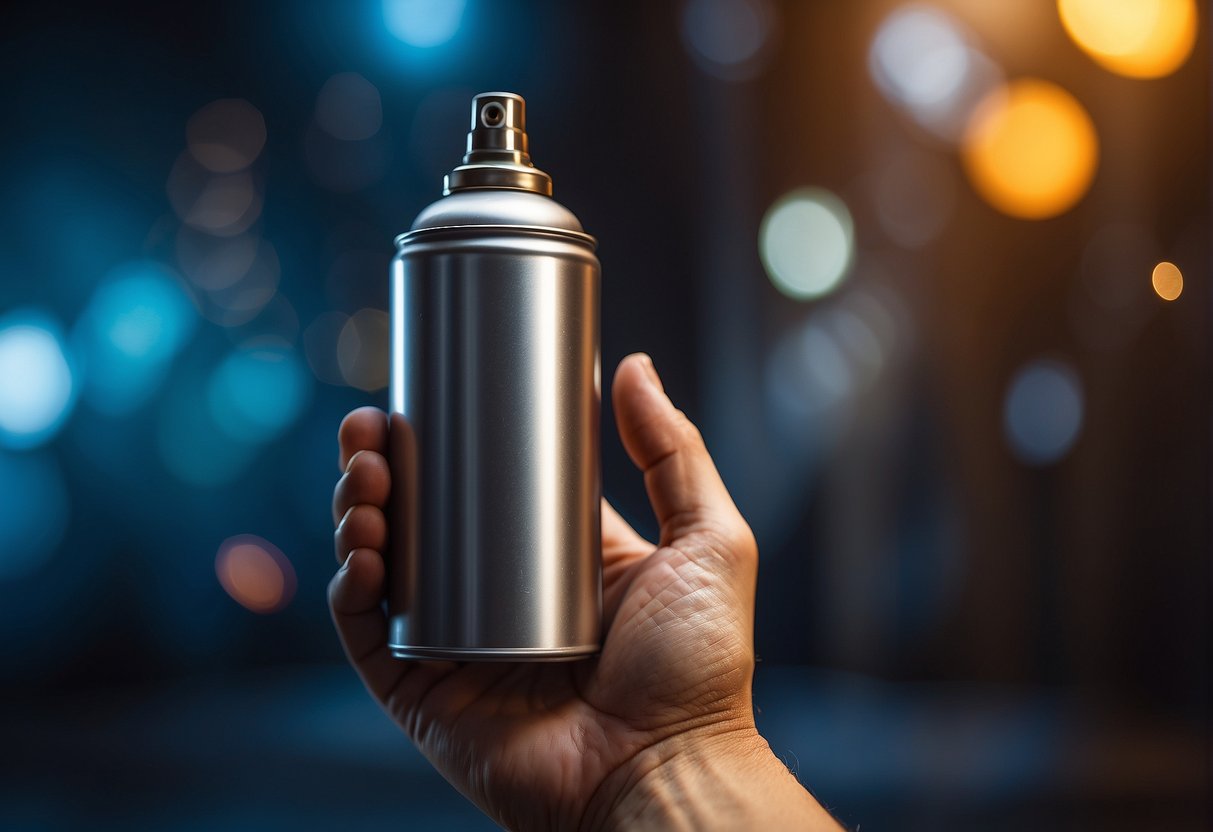
When it comes to painting, there are two popular methods: airbrush and spray paint. Both techniques have their pros and cons, and it’s important to understand the fundamentals of each to determine which is best for your project.
Fundamentals of Airbrush
Airbrush is a painting technique that uses a small, air-operated tool that sprays paint onto a surface. The tool is connected to a compressor that supplies compressed air to the nozzle, which atomizes the paint into tiny droplets. The droplets are then sprayed onto the surface in a fine mist, creating a smooth and even finish.
Airbrushes are commonly used for fine art, automotive painting, and makeup application. They allow for precise control over the paint application, making them ideal for detailed work. Airbrushes also allow for a wider range of effects, such as creating soft edges or blending colors.
Basics of Spray Paint
Spray paint, on the other hand, is a painting technique that uses an aerosol can to spray paint onto a surface. The can contains compressed air and paint, which is released through a nozzle when the button is pressed. The paint is sprayed onto the surface in a mist, creating a thin and even layer.
Spray paints are commonly used for large-scale projects, such as painting furniture, walls, or cars. They are easy to use and require less skill and setup than airbrushes. However, they offer less control over the paint application, and the finish may not be as smooth as with airbrushes.
In conclusion, both airbrush and spray paint have their advantages and disadvantages. Airbrushes are best suited for projects that require fine details and precise control over paint application, while spray paint is best suited for projects that require a large amount of color to be applied quickly and efficiently.
Comparing Application Techniques
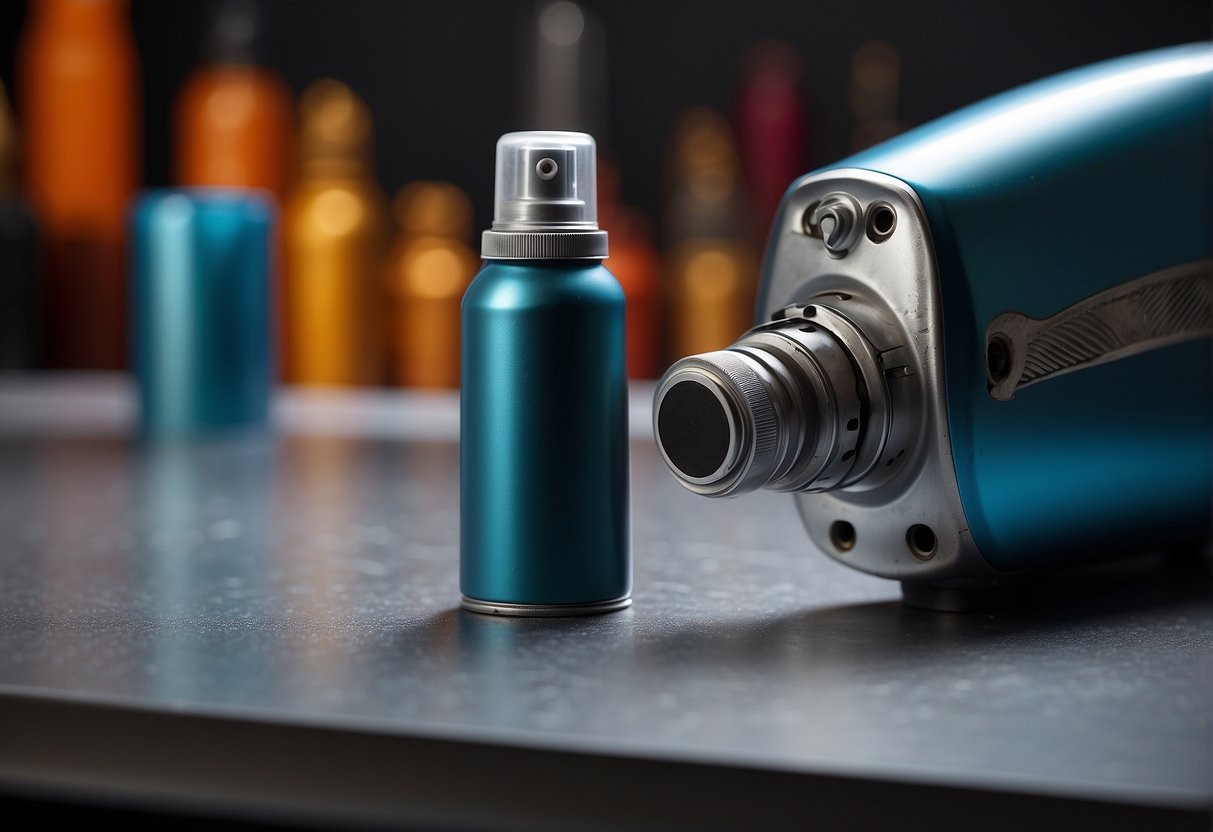
When it comes to application techniques, airbrush and spray paint have their own strengths and weaknesses. In this section, I will discuss the differences between the two techniques.
Airbrush Technique and Precision
Airbrushing is the process of using compressed air to spray a fine mist of paint onto a surface. One of the biggest advantages of airbrushing is the level of precision and control it offers. With an airbrush, you can create very fine lines and intricate details that are difficult to achieve with other techniques.
Another advantage of airbrushing is the ability to create a smooth, even coverage. The technique allows for a more gradual buildup of layers, resulting in a more uniform finish. This makes airbrushing a popular choice for artists who work with miniatures, models, and other small-scale projects.
Spray Paint Technique and Coverage
Spray painting, on the other hand, is a more versatile technique that can be used on a variety of surfaces, including wood, metal, plastic, and more. It is also a faster technique that can cover large areas quickly and efficiently.
One of the biggest advantages of spray painting is the even coverage it provides. With the right technique, you can achieve a smooth, consistent finish that looks professional and polished. Spray painting is also a great option for large-scale projects, such as painting furniture or walls.
However, spray painting does require a bit more practice and technique to achieve the desired results. You need to pay attention to the spray pattern and distance from the surface to avoid uneven coverage or drips.
In conclusion, both airbrushing and spray painting have their own unique advantages and disadvantages when it comes to application techniques. The choice between the two ultimately depends on the type of project you are working on and the level of precision and coverage you require.
Assessing Performance and Results
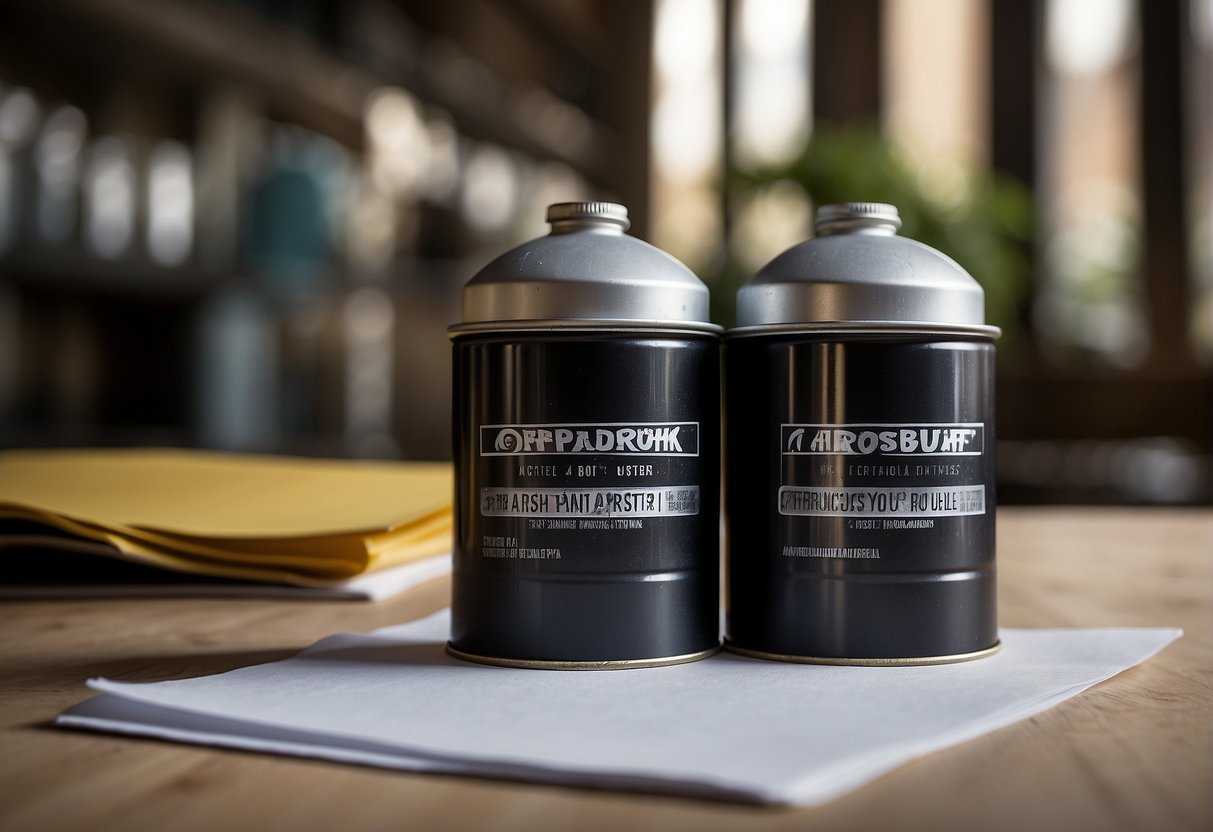
When it comes to assessing the performance and results of airbrushing and spray painting, there are several important factors to consider. These include the quality and finish of the work, as well as the efficiency and speed of the process.
Quality and Finish of Airbrushing
One of the key benefits of airbrushing is the ability to achieve a very smooth and detailed finish. This is because the airbrush allows for very fine control over the paint application, making it easy to create gradients and other intricate details. Additionally, the thin layers of paint applied by an airbrush can result in a very even and consistent finish, with no visible brush strokes or other imperfections.
Efficiency and Speed of Spray Painting
While airbrushing may be better suited for detailed work, spray painting can be a much faster and easier process for larger applications. With a spray gun, it’s possible to cover large areas quickly and evenly, resulting in a more efficient process overall. Additionally, spray painting can be a good option for achieving a more textured finish, which can be difficult to achieve with an airbrush.
Overall, the choice between airbrushing and spray painting will depend on the specific needs of your project. If you’re looking for a very smooth and detailed finish, airbrushing may be the way to go. However, if you need to cover large areas quickly and efficiently, spray painting may be a better option.
Practical Considerations
Costs and Maintenance
When considering the costs of airbrush vs spray paint, it is important to note that airbrushing can be more expensive upfront. Airbrushing requires a compressor and airbrush gun, which can be costly. On the other hand, spray paint cans are generally cheaper and more readily available. However, when considering the cost per use, airbrushing can be more cost-effective in the long run since airbrush paint tends to be more concentrated and lasts longer than spray paint.
Maintenance is also an important factor to consider. Airbrushes require regular cleaning and maintenance to ensure proper functionality. This includes disassembling the airbrush gun and cleaning each part thoroughly. Spray paint cans, on the other hand, can be easily disposed of after use, making them a more convenient option.
Suitability for Projects
When deciding between airbrush vs spray paint, it is important to consider the type of project you will be working on. For larger surfaces, spray paint cans can cover more area in less time than airbrushing. However, airbrushing is better suited for smaller projects and models where precision and detail are important.
Airbrushing allows for more control over the paint application, making it ideal for adding special effects and details to models and miniatures. Spray paint cans, on the other hand, are better suited for covering large areas quickly and efficiently.
In conclusion, when deciding between airbrush vs spray paint, it is important to consider the costs and maintenance as well as the suitability for the project at hand. While airbrushing can be more expensive and require more maintenance, it allows for more control and precision in smaller projects and models. Spray paint cans, on the other hand, are more cost-effective and better suited for covering larger surfaces quickly and efficiently.
Advantages and Disadvantages
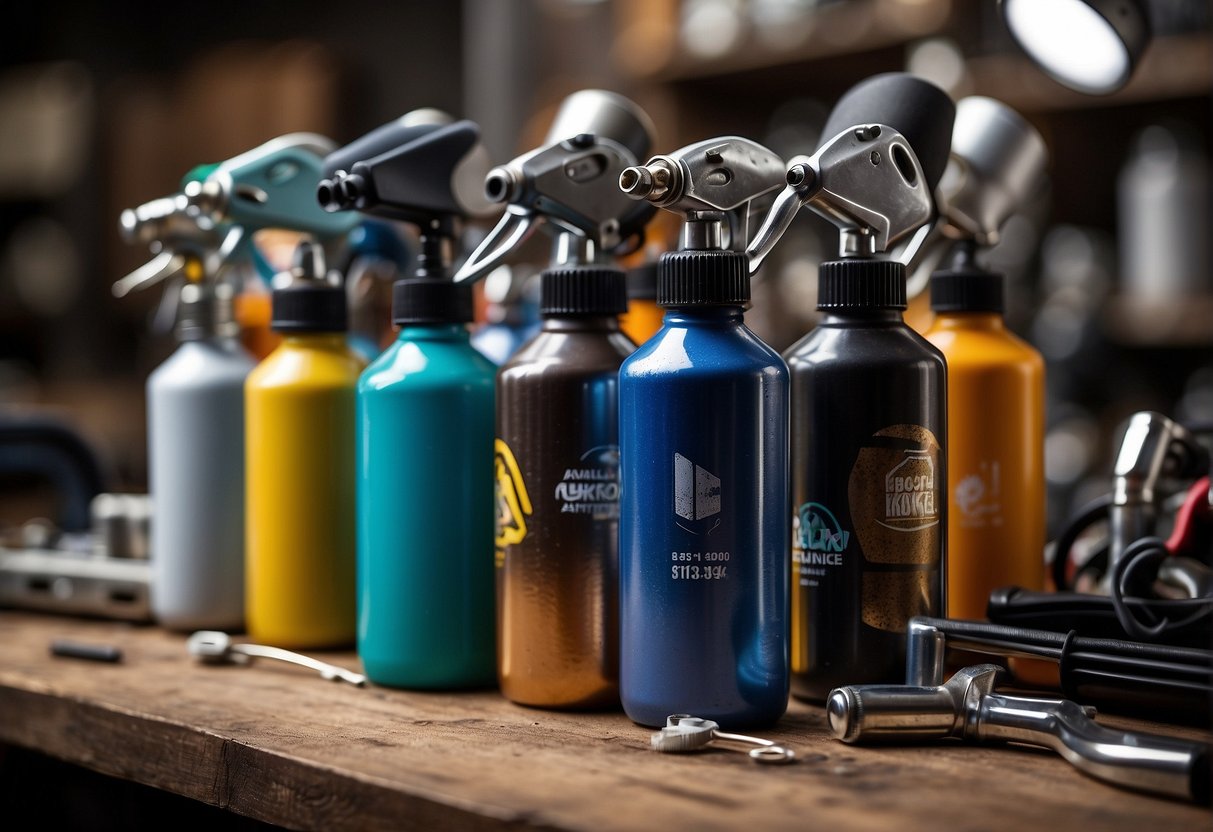
Pros and Cons of Airbrushing
Airbrushing is a popular technique used in many industries, including art, automotive, and makeup. It has several advantages over traditional spray painting. One of the biggest advantages of airbrushing is its precise control. With an airbrush, I can achieve fine details and create smooth gradations that are difficult to achieve with a spray can. Additionally, airbrushing is versatile and can be used on a variety of surfaces, including paper, canvas, metal, plastic, and more.
However, airbrushing also has its disadvantages. One of the biggest drawbacks is the price. An airbrush and an air system can be expensive, especially for high-end models. Additionally, airbrushing can be time-consuming and messy. It requires proper ventilation and clean-up after each use.
Pros and Cons of Spray Painting
Spray painting is a popular and convenient technique for covering large areas quickly and easily. It is also more affordable than airbrushing. Spray cans are readily available and can be purchased at most hardware stores. Additionally, spray painting can be less time-consuming than airbrushing, especially when painting large areas.
However, spray painting also has its disadvantages. One of the biggest drawbacks is the lack of precise control. Spray cans are difficult to control, and it can be challenging to achieve fine details and smooth gradations. Additionally, spray painting can be messy and requires proper ventilation to avoid inhaling harmful fumes.
In summary, both airbrushing and spray painting have their advantages and disadvantages. Airbrushing offers precise control and versatility but can be expensive and time-consuming. Spray painting is affordable and covers large areas quickly but lacks precise control and can be messy. Ultimately, the choice between airbrushing and spray painting depends on the project’s requirements, budget, and personal preferences.
Frequently Asked Questions
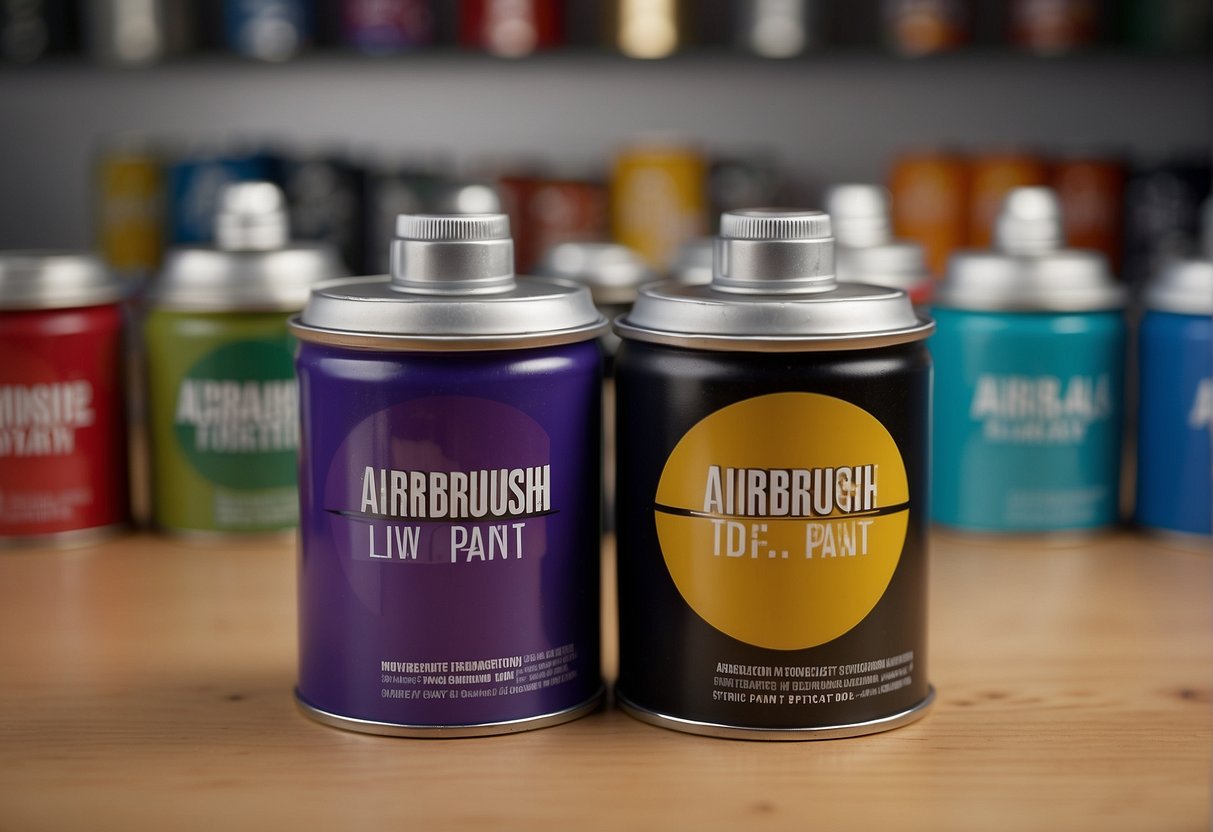
What are the advantages of using an airbrush for car painting compared to traditional spray paint?
Airbrushing offers several advantages over traditional spray painting for cars. First, airbrushing allows for more precise control over the paint application, resulting in a smoother finish with fewer imperfections. Additionally, airbrushing allows for the creation of finer details and more intricate designs. Finally, airbrushing can be used to create unique paint effects, such as fades and blends, that are difficult to achieve with traditional spray painting techniques.
How does airbrushing model cars differ from using spray cans in terms of finish and detail?
Airbrushing model cars offers several advantages over using spray cans. First, airbrushing allows for more precise control over the paint application, resulting in a smoother finish with fewer imperfections. Additionally, airbrushing allows for the creation of finer details and more intricate designs. Finally, airbrushing can be used to create unique paint effects, such as fades and blends, that are difficult to achieve with spray cans.
Can regular paint be used in an airbrush, or does it require specialized airbrush paint?
While regular paint can be used in an airbrush, it is often too thick to be sprayed effectively. Specialized airbrush paint is formulated to be thinner and more fluid, making it easier to spray through the airbrush. Additionally, airbrush paint is available in a wider range of colors and finishes than regular paint.
What applications is airbrush paint particularly well-suited for?
Airbrush paint is particularly well-suited for applications that require fine detail and precision, such as model painting, custom automotive painting, and artistic painting. Additionally, airbrush paint can be used to create unique paint effects, such as fades and blends, that are difficult to achieve with traditional spray painting techniques.
What are the key factors to consider when choosing between an airbrush and spray paint for a project?
When choosing between an airbrush and spray paint for a project, there are several key factors to consider. First, consider the level of detail and precision required for the project. If fine detail is required, an airbrush may be the better choice. Second, consider the size and complexity of the project. For larger projects, such as automotive painting, a spray gun may be more efficient. Finally, consider the type of paint being used. Some paints are better suited for airbrushing, while others are better suited for spray painting.
Which primer application method provides a better base for painting: airbrush primer or spray can primer?
Both airbrush primer and spray can primer can provide a good base for painting, but each has its own advantages and disadvantages. Airbrush primer allows for more precise control over the application, resulting in a smoother finish with fewer imperfections. Additionally, airbrush primer can be used to create finer details and more intricate designs. Spray can primer, on the other hand, is more convenient and easier to use, making it a good choice for larger projects or for those who are new to painting. Ultimately, the choice between airbrush primer and spray can primer will depend on the specific needs of the project.

Hi, I’m Sal Muller of Tooltrip.com. My DIY experience led me to understand essential power tools for home projects. Tooltrip.com guides enthusiasts and professionals in choosing right tools for any job. I provide concise top tool reviews for easier, efficient DIY.

